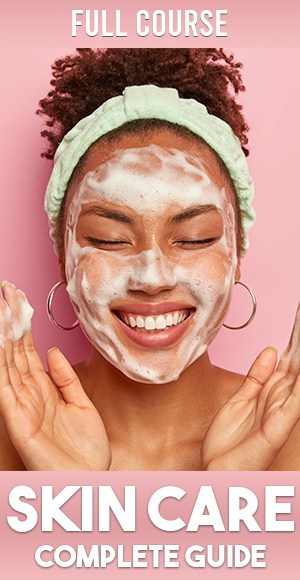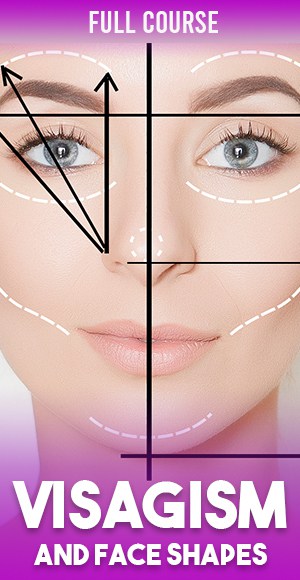Understanding Melasma and Makeup for Melasma Solutions

Introduction to Melasma
Melasma, a common skin condition, presents as brown or gray-brown patches, primarily on the face. These patches often appear on the cheeks, bridge of the nose, forehead, chin, and above the upper lip. Melasma can also occur on parts of the body that are frequently exposed to the sun, like the forearms and neck. Understanding these characteristics is crucial for anyone seeking to manage melasma effectively with makeup for melasma.
Characteristics and Prevalence
- Appearance: Brown or gray-brown patches.
- Common Areas: Face (cheeks, forehead, chin), forearms, neck.
- Sun Exposure: Aggravates the condition.
Melasma is more prevalent in women, especially during pregnancy, earning it the nickname “the mask of pregnancy.” However, men can also be affected. Factors like sun exposure, hormonal changes, and genetics play a significant role in its development.
The Role of Makeup in Managing Melasma
Makeup for melasma can be a transformative tool for those dealing with melasma, offering a way to conceal hyperpigmentation and enhance one’s confidence. The key lies in selecting the right products that provide full coverage while maintaining skin health.
Importance of Choosing the Right Products
- Coverage: Opt for foundations that offer full coverage.
- Skin Health: Choose products that are non-comedogenic and hypoallergenic.
- Sun Protection: Use makeup with SPF protection to prevent aggravation of melasma.
Incorporating makeup for melasma into your beauty regimen requires a balance between camouflage and care. Foundations that offer a natural finish, are long-wearing, and include sun protection are ideal. For more insights into managing this condition, the American Academy of Dermatology provides valuable information on understanding melasma. Additionally, considering the importance of sun protection is crucial in preventing melasma from worsening.
Selecting the Right Foundation for Melasma
Choosing the right foundation is a critical step in effectively using makeup for melasma. The foundation should not only conceal but also care for the skin.
Factors to Consider
- Skin Tone: Match the foundation to your natural skin tone for a seamless look.
- Skin Type: Whether you have oily, dry, or combination skin, select a foundation that complements your skin type.
- Texture: Look for a texture that offers a natural finish and feels comfortable on the skin.
Recommended Foundations
- L’Oreal Paris Infallible: Known for its long-lasting coverage and variety of shades.
- Neutrogena Healthy Skin Compact: Offers a lightweight formula with SPF protection, ideal for sensitive skin.
Application Techniques for Melasma Coverage
Applying foundation correctly can significantly enhance its effectiveness in concealing melasma.
Step-by-Step Guide
- Preparation: Start with a clean, moisturized face. Apply a primer if desired.
- Color Correction: Use a color corrector to neutralize dark spots. Green neutralizes redness, while peach or orange tones can counteract blue or gray hues.
- Foundation Application: Apply the foundation in thin layers, building coverage gradually. Use a damp beauty sponge or brush for an even application.
- Setting: Set the foundation with a translucent powder to ensure it stays in place.
Tips for a Natural Look
- Blend Well: Ensure the foundation is well-blended, especially at the jawline and hairline.
- Light Touch: Use a light hand to avoid a cakey appearance.
- Hydration: Choose foundations that promote skin hydration to avoid a dry, flaky look.
For more detailed makeup application techniques, WebMD offers insights on safe makeup practices, which are particularly important when dealing with skin conditions like melasma.
Tips and Product Recommendations

Advanced Tips – Makeup to cover Melasma
When dealing with melasma, using the right makeup techniques can significantly enhance the appearance of your skin.
Using Color Correctors and Concealers
- Color Correctors: Before applying foundation, use a color corrector to neutralize discolored patches. Peach tones are excellent for darker skin, while lighter skin benefits from yellow or lavender tones.
- Concealers: Apply a high-coverage concealer on top of the foundation for extra concealment of dark spots.
Setting Makeup for Melasma for Long-Lasting Coverage
- Setting Powder: Use a translucent setting powder to keep makeup in place.
- Setting Spray: A setting spray can provide additional staying power, especially in humid conditions.
Top Product Recommendations for Makeup for Melasma
Finding the right foundation is key in managing the appearance of melasma. Here are some top recommendations:
- Smashbox Studio Skin:
- Pros: Long-wearing, hydrating formula; offers buildable coverage.
- Cons: Limited shade range for very dark or very fair skin tones.
- Kat Von D Lock-It:
- Pros: Full coverage, matte finish; suitable for all skin types.
- Cons: Can feel heavy if applied too thickly.
Additional Recommendations
- Dermablend Cover Creme: High coverage, suitable for sensitive skin.
- Clinique Even Better Makeup: Offers SPF protection, ideal for daily wear.
- Estée Lauder Double Wear: Long-lasting, wide range of shades.
Each of these products has its unique benefits and drawbacks, and what works best can vary based on individual skin type and the severity of melasma. For more insights into selecting the right makeup to cover melasma products, the National Institutes of Health offers valuable information on cosmetic dermatology, which can be particularly helpful for those dealing with skin conditions like melasma.
Maintaining Skin Health While Using Makeup for Melasma
While makeup can effectively conceal melasma, maintaining overall skin health is crucial.
Importance of Skincare Routine
- Gentle Cleansing: Use a mild cleanser to remove makeup without irritating the skin.
- Moisturizing: Keep the skin hydrated with a good moisturizer, preferably with SPF for daytime use.
- Night Care: Use a nourishing night cream to repair and rejuvenate the skin overnight.
Recommended Products for Skin Health
- Cleansers: Look for non-comedogenic and hypoallergenic options.
- Moisturizers: Choose products with hyaluronic acid or ceramides for hydration.
- Sunscreens: Opt for mineral-based sunscreens with at least SPF 30.
Maintaining a balanced skincare routine is essential in managing melasma, especially when using makeup for melasma regularly. For more detailed skincare advice, the Mayo Clinic offers excellent skin care tips that are beneficial for those with sensitive or condition-prone skin.
Conclusion and Additional Resources for Makeup for Melasma
In conclusion, managing melasma with makeup for melasma requires a combination of the right products, application techniques, and a solid skincare routine. Remember:
- Use makeup for melasma that offers full coverage and SPF protection.
- Apply makeup with techniques that enhance natural beauty while concealing hyperpigmentation.
- Maintain skin health with a gentle skincare routine.
For further information and resources on managing melasma and maintaining skin health, explore the links provided throughout this article. They offer valuable insights and tips that can help you in your journey to achieving a flawless complexion while dealing with melasma. Additionally, for those interested in learning more about makeup application, Makeupflix, a streaming course makeup platform, offers a range of tutorials and courses that can be incredibly beneficial.





























